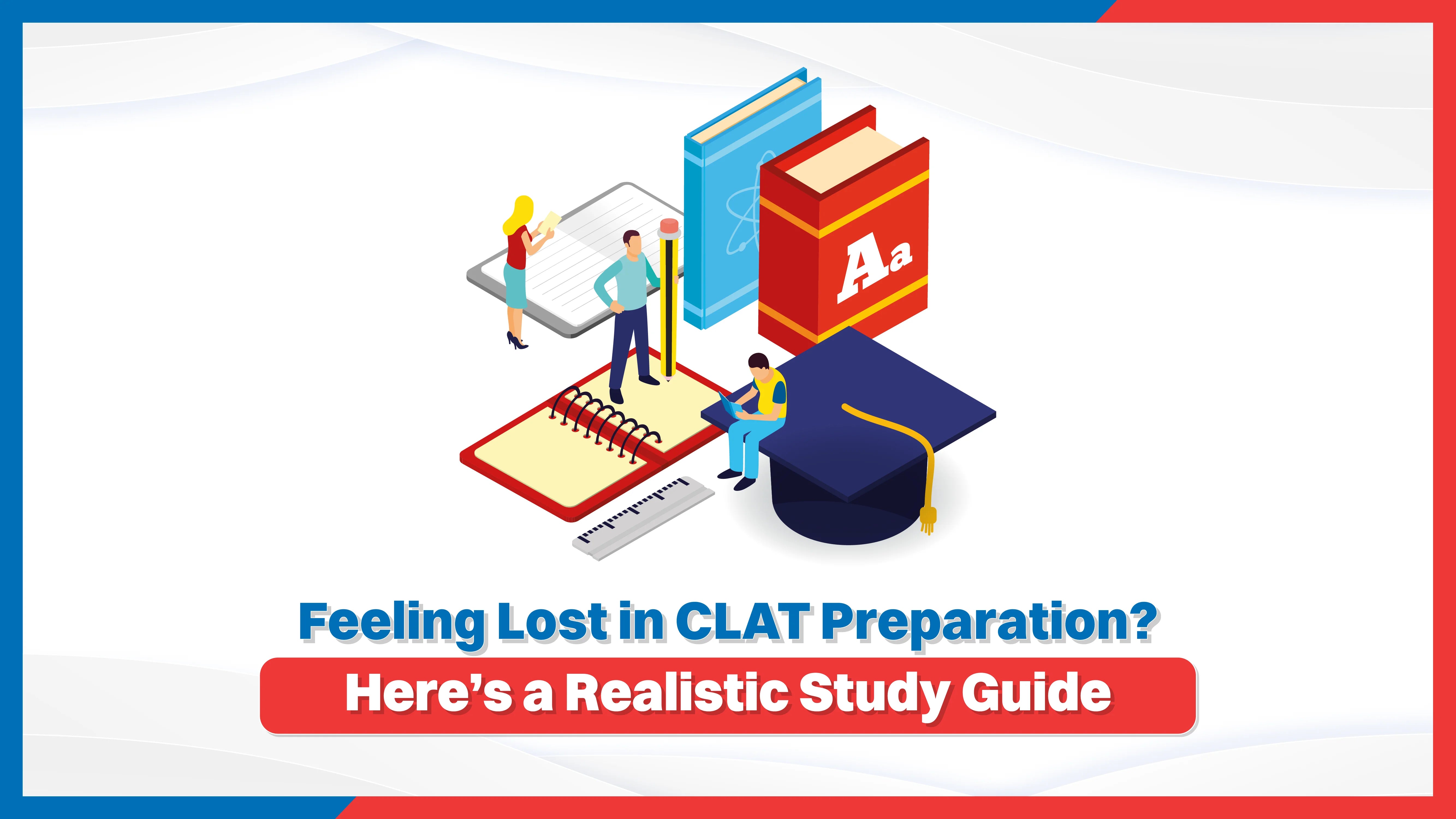Common Law Admission Test (CLAT) is one of the most competitive entrance examinations to be taken by students who want to be admitted to the best National Law Universities (NLUs) in India. The exam pattern, the distribution of questions, and their difficulty level have changed over the years, and it is a must that aspirants study CLAT previous year papers thoroughly.
We have in this in-depth analysis identified the current trends that were witnessed in the CLAT papers, the difficulty level of the papers in each subject, the questions that should be done, and how the CLAT mock test papers and the CLAT preparation books can be combined intelligently to make a smart preparation. Whether you are targeting CLAT UG or PG, this post provides you with a detailed knowledge of what to expect and how to tackle the exam to achieve the best results.
What is the importance of CLAT Previous Year Paper Analysis?
A comprehensive study of CLAT previous year papers is advantageous in the following manner:
• Know the weightage of different sections
• Determine the type of frequently asked questions
• Understand the changing level of difficulty
• Evaluate time management skills
• Prepare in line with the real expectations of exams
Both toppers and mentors agree that it is necessary to practice and analyze CLAT previous year papers not only to revise but also to get a predictive idea of the new trends. This, combined with CLAT mock test papers will make preparation more efficient.
CLAT Exam Structure: A Quick Overview
Before diving into the trends, here’s a quick look at the CLAT UG structure to understand how the exam is organized.
|
Section |
Number of Questions |
Weightage (%) |
Time Allotted |
|
English Language |
28-32 |
~20% |
No fixed time per section |
|
Current Affairs & GK |
35-39 |
~25% |
- |
|
Legal Reasoning |
35-39 |
~25% |
- |
|
Logical Reasoning |
28-32 |
~20% |
- |
|
Quantitative Techniques |
13-17 |
~10% |
- |
|
Total |
150 Questions |
100% |
120 minutes |
It’s clear from the above that Legal Reasoning and GK are two of the most impactful sections, followed by English and Logical Reasoning.
Section-Wise CLAT Paper Trends (2019–2024)
Let’s now look at how each section has evolved over the past few years:
1. English Language
Trend: Shift from grammar-based to comprehension-based.
|
Year |
Type of Questions |
Difficulty Level |
|
2019 |
Grammar, Vocabulary, RC (moderate) |
Moderate |
|
2020 |
Passage-based comprehension |
Moderate |
|
2021 |
Inference-heavy reading comprehension |
Moderate-Difficult |
|
2022 |
Opinion-based inference |
Moderate |
|
2023 |
Editorial-based questions |
Moderate |
|
2024 |
Current affair-based passages |
Moderate |
Insight: The English section has transitioned into a purely reading comprehension-based area. Rote grammar rules no longer dominate. Aspirants must practice editorials and long-form texts from CLAT preparation books to gain confidence.
2. Current Affairs including GK
Trend: Emphasis on understanding current events, rather than static GK.
|
Year |
Focus Area |
Source Type |
Difficulty |
|
2019 |
Static + Current |
General Knowledge |
Moderate |
|
2020 |
Monthly Current Affairs |
Newspapers, Mags |
Moderate |
|
2021 |
Current with context |
News excerpts |
Moderate |
|
2022 |
International Events |
Analytical passages |
Difficult |
|
2023 |
India-centric developments |
News + Stats |
Moderate |
|
2024 |
Policy-based and Legal News |
Editorial articles |
Moderate |
Insight: Direct questions have given way to passage-based GK. This means more time consumption and deeper understanding. Solving CLAT previous year papers helps build a sense of recurring events and themes.
3. Legal Reasoning
Trend: From rote legal principles to situational reasoning.
|
Year |
Focus |
Difficulty Level |
Common Mistake |
|
2019 |
Principle-Fact based |
Moderate |
Memorization |
|
2020 |
Comprehension style |
Moderate-Difficult |
Misreading |
|
2021 |
Legal + Current |
Moderate |
Overthinking |
|
2022 |
Case-based logic |
Difficult |
Lack of clarity |
|
2023 |
Legal updates |
Moderate |
Misinterpretation |
|
2024 |
Rights, Constitution |
Moderate |
Hasty answers |
Insight: Legal aptitude is now less about law and more about logical reasoning within a legal context. This requires extensive practice through CLAT mock test papers.
4. Logical Reasoning
Trend: Higher focus on critical reasoning and conclusion-based questions.
Insight: From simple blood relations and series, the focus has shifted to abstract and analytical reasoning. Students need to focus on assumptions, arguments, and logical flaws.
5. Quantitative Techniques
Trend: Shift from standalone maths questions to data-based problem-solving.
|
Year |
Type of Data |
Source |
Difficulty |
|
2019 |
Arithmetic-based |
NCERT |
Easy |
|
2020 |
Table and Graph-based |
Data sets |
Moderate |
|
2021 |
Caselets + Graph |
DI formats |
Moderate |
|
2022 |
Word problems + DI |
Mixed |
Moderate |
|
2023 |
Logical DI + Arithmetic |
Mixed |
Difficult |
|
2024 |
Complex DI Passages |
Logical |
Moderate-Difficult |
Insight: Pure arithmetic is not enough. Integration of logic into data interpretation has made this section more conceptual. Using the best books for CLAT preparation that include DI caselets can enhance this area.
One of the most common questions from aspirants is:
Is CLAT a very difficult exam?
CLAT is competitive, not necessarily difficult. Its moderate difficulty is made intense by:
-
The high number of applicants
-
Limited seats in top NLUs
-
The need for accuracy and speed
A student who understands how to study CLAT previous year papers systematically and integrates them with CLAT mock test papers and CLAT preparation books is more likely to clear the exam with a high rank.
What Type of Questions Are Repeated in CLAT?
While exact questions don’t repeat, patterns, themes, and even question formats do. For example:
-
Legal Reasoning often has cases on contracts, torts, and constitutional law.
-
English comprehension often borrows themes from social issues, editorials, or landmark judgments.
-
Logical reasoning frequently uses assumptions and argument questions similar to previous years.
So, it’s smart to regularly analyze CLAT previous year papers to identify “must-do” question types like:
-
Principle + Fact combinations in Legal
-
Cause and effect in Logical
-
Budget/Policy-based passages in GK
Must-Do Questions in CLAT: What You Should Master
Here’s a table of question types every aspirant must master before appearing for CLAT:
|
Section |
Must-Do Questions Type |
|
English |
Tone, Inference, Title, Author's Intent |
|
GK/Current Affairs |
Legal Current Affairs, Constitutional Events |
|
Legal Reasoning |
Fact vs Opinion, Legal Application |
|
Logical Reasoning |
Assumption, Strengthen/Weaken, Paradox |
|
Quant Techniques |
Percentage, Ratio, Table DI, Line Graphs |
These question types are not optional—they’re the foundation of scoring well in CLAT.
Should I give mock tests before finishing the syllabus?
Yes. CLAT is not about syllabus completion—it's about skill acquisition. Taking CLAT mock test papers early:
-
Improves time management
-
Highlights weak areas
-
Builds exam temperament
Similarly, solving CLAT previous year papers trains your brain in pattern recognition. This pairing of practice + exposure ensures faster accuracy and better scores.
What’s the Best Way to Analyze a CLAT Previous Year Paper?
The important stages of paper analysis are:
1. Try it as in the actual exam- less than 2 hours.
2. Mark yourself honestly- mark accuracy section-wise.
3. Determine the kind of questions that you failed to answer correctly. Was it a misinterpretation or a conceptual gap?
4. In case of need, compare with the CLAT preparation book answer explanations.
5. Note down frequently occurring topics- Legal and GK in particular.
6. Take the paper again after 15 days to determine whether you have retained better.
What is the number of CLAT last year papers to be solved?
Ideally, previous year papers of CLAT have to be solved in 10-15 years with mock tests to have a balanced view of historical patterns as well as adaptive patterns.
Is it possible to crack CLAT in 3 months by just solving previous year papers?
Last year papers are great resources, but they cannot stand alone. You have to supplement them with CLAT preparation books and CLAT mock test papers to practice newer types of questions and newer topics that have not been asked earlier.
Read More: Top Law Colleges Accepting CLAT Scores – Beyond NLUs
What is the best score to secure admission in a top 5 NLU?
The safe score depends on the year, but it is competitive to aim at 100+ out of 150. This implies a minimum of 65-70 per cent correct in each of the sections and this can be achieved by intelligent study of CLAT previous year papers.
Final Words: Make PYQ Analysis Your Backbone
CLAT is not only about studying hard, but it is about studying smart. Thousands of students pass the exam year after year, not because they learnt all, but because they learnt what was important.
Using CLAT previous year papers, CLAT mock test papers, and the best books to prepare for CLAT in 2025, you can develop a result-oriented approach that will give you the highest score with the least amount of effort.
Learn the patterns. Be familiar with the traps. Solve smart.













